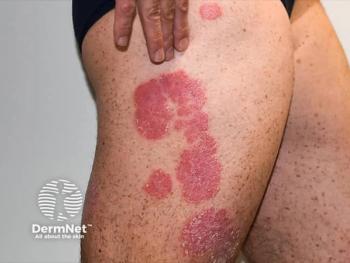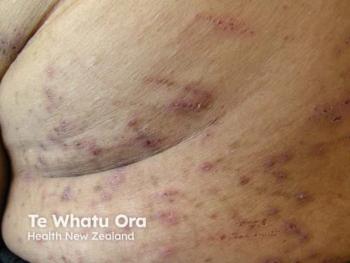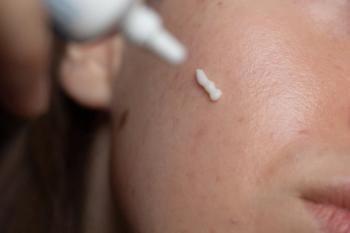
DecisionDx-Melanoma Test Outperforms Staging and CP-GEP in Identifying Patients Unlikely to Benefit from Sentinel Lymph Node Biopsy
Key Takeaways
- DecisionDx-Melanoma outperforms traditional staging and CP-GEP models in assessing SLN metastasis risk in melanoma patients.
- The test identifies low-risk patients with a 2.8% SLN positivity rate, below the NCCN's 5% threshold for omitting SLNB.
New findings reveal DecisionDx-Melanoma more accurately identifies patients with under 5% risk of SLN positivity, supporting safer avoidance of SLNB surgery.
A recently published study in Cancer Diagnosis & Prognosis reaffirmed the clinical utility of DecisionDx-Melanoma, a genomic risk assessment test developed by Castle Biosciences.1
This research highlights the test’s superiority over both traditional staging systems and competing molecular models in determining which melanoma patients have a low risk of sentinel lymph node (SLN) metastasis and may safely avoid sentinel lymph node biopsy (SLNB).
A Path for Early-Stage Melanoma Management
For many patients, particularly those with T1-T2 tumors, the likelihood of a SLNB positive result is minimal. Despite this, most still undergo SLNB, a procedure that carries risks such as infection, seroma formation, and lymphedema.1
The National Comprehensive Cancer Network (NCCN) recommends that SLNB be strongly considered only when the likelihood of SLN positivity exceeds 10%, with a “consideration” range of 5-10%, and a guideline to forgo it entirely if risk is below 5%.2
According to the new study,3 patients categorized as low risk by the test had an SLN positivity rate of just 2.8%, well below the 5% NCCN guideline threshold. This finding supports clinicians in making more informed decisions about whether to recommend or forgo SLNB.
Study Design
The researchers compared data across 5 CP-GEP (clinicopathologic and gene expression profile) validation studies and 4 DecisionDx-Melanoma validation studies, with a focus on T1–T2 tumors.
When risk was assessed using the CP-GEP model, the average SLN positivity among low-risk patients was 6.2%, exceeding the NCCN’s safe cutoff to omit SLNB. In contrast, DecisionDx-Melanoma demonstrated clear advantage with its 2.8% SLN positivity rate.
CP-GEP not only failed to outperform American Joint Committee on Cancer (AJCC) staging but underperformed it. DecisionDx-Melanoma outperformed both staging models.
"Our study confirms that DecisionDx-Melanoma achieves this by providing significant risk stratification, outperforming the standard of care (i.e., AJCC staging) and the CP-GEP genomic test," said lead author Peter Prieto, MD, MPH, surgical oncologist at the University of Rochester Medical Center, in a news release.1
Clinical Significance
DecisionDx-Melanoma is validated in multiple studies for assessing both recurrence risk and SLN positivity, functioning independently of traditional clinicopathologic variables like Breslow thickness and patient age. The new analysis builds on a growing body of evidence that supports the test’s role in tailoring care for patients with early-stage melanoma.
A recent analysis from the DECIDE study, published in Cancer Medicine, found that patients with cutaneous melanoma who received a Class 1A result from Castle Biosciences’ 31-gene expression profile (31-GEP) test had a 100% 3-year recurrence-free survival rate, even without undergoing SLNB.4 These findings further supported the clinical use of the DecisionDx-Melanoma test to help identify patients at very low risk of nodal metastasis who may safely avoid SLNB, thereby reducing surgical risks and health care costs while maintaining satisfactory outcomes.
Matthew Goldberg, MD, Castle’s senior vice president of medical affairs, emphasized that patients with low-risk DecisionDx-Melanoma results not only avoid unnecessary surgery but also maintain high recurrence-free survival rates.
"This study underscores the value of using DecisionDx-Melanoma test results to help guide improved SLNB decisions," Goldberg said.1 "Further, it strengthens our recent prospective study findings, which show that patients with low-risk DecisionDx-Melanoma results (less than 5% likelihood of SLN positivity) who forgo SLNB surgery maintain high recurrence-free survival rates, providing clinicians and patients with greater confidence in treatment decisions guided by our test."
References
- New study shows Castle Biosciences’ DecisionDx-Melanoma test outperforms staging and CP-GEP in identifying patients at low risk of sentinel lymph node positivity. News release. Globe Newswire. April 30, 2025. Accessed May 1, 2025.
https://www.globenewswire.com/news-release/2025/04/30/2861583/0/en/New-Study-Shows-Castle-Biosciences-DecisionDx-Melanoma-Test-Outperforms-Staging-and-CP-GEP-in-Identifying-Patients-at-Low-Risk-of-Sentinel-Lymph-Node-Positivity.html - Ishizuki S, Nakamura Y. Role of sentinel lymph node biopsy for skin cancer based on clinical studies. Cancers (Basel). 2023;15(13):3291. Published 2023 Jun 22.
doi:10.3390/cancers15133291 - Prieto PA, Ferris LK, Guenther MJ. Comparing two gene expression profile tests to standard of care for identifying patients with cutaneous melanoma at low risk of sentinel lymph node positivity. Cancer Diagn Progn. 2025;5(3):261-267.
doi:10.21873/cdp.10438 - Guenther JM, Ward A, Martin BJ, et al. A prospective, multicenter analysis of recurrence-free survival after sentinel lymph node biopsy decisions influenced by the 31-GEP. Cancer Med. Published online April 1, 2025.
doi:10.1002/cam4.70839
Newsletter
Like what you’re reading? Subscribe to Dermatology Times for weekly updates on therapies, innovations, and real-world practice tips.


















